Pallabi Saikia
A Hybrid CNN-LSTM model for Video Deepfake Detection by Leveraging Optical Flow Features
Jul 28, 2022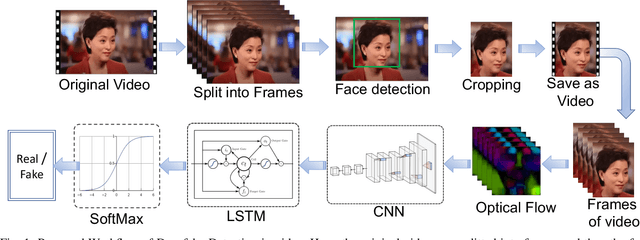
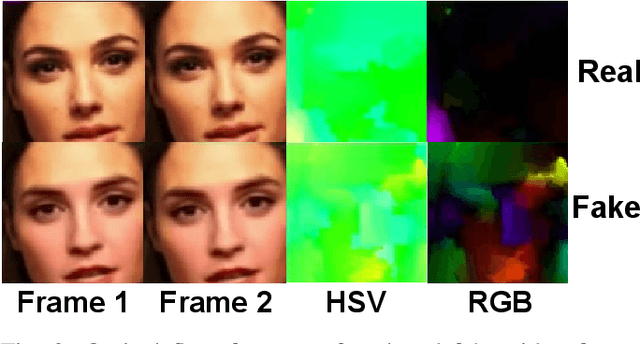
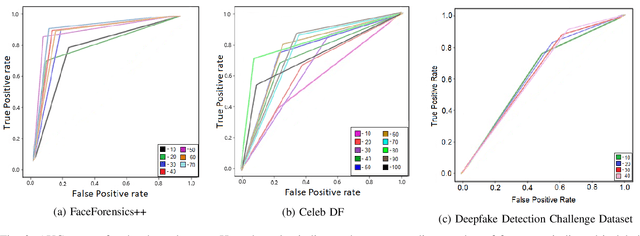
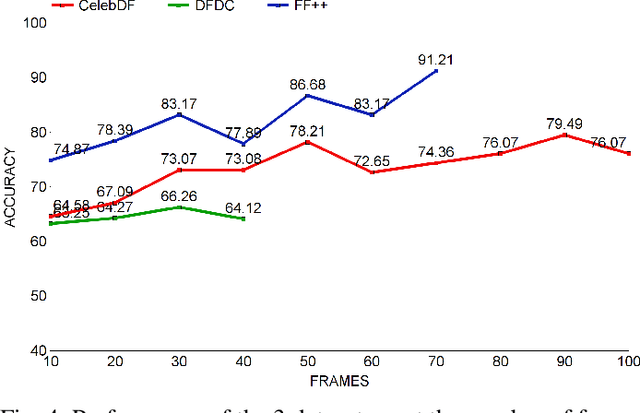
Abstract:Deepfakes are the synthesized digital media in order to create ultra-realistic fake videos to trick the spectator. Deep generative algorithms, such as, Generative Adversarial Networks(GAN) are widely used to accomplish such tasks. This approach synthesizes pseudo-realistic contents that are very difficult to distinguish by traditional detection methods. In most cases, Convolutional Neural Network(CNN) based discriminators are being used for detecting such synthesized media. However, it emphasise primarily on the spatial attributes of individual video frames, thereby fail to learn the temporal information from their inter-frame relations. In this paper, we leveraged an optical flow based feature extraction approach to extract the temporal features, which are then fed to a hybrid model for classification. This hybrid model is based on the combination of CNN and recurrent neural network (RNN) architectures. The hybrid model provides effective performance on open source data-sets such as, DFDC, FF++ and Celeb-DF. This proposed method shows an accuracy of 66.26%, 91.21% and 79.49% in DFDC, FF++, and Celeb-DF respectively with a very reduced No of sample size of approx 100 samples(frames). This promises early detection of fake contents compared to existing modalities.
Modelling Social Context for Fake News Detection: A Graph Neural Network Based Approach
Jul 27, 2022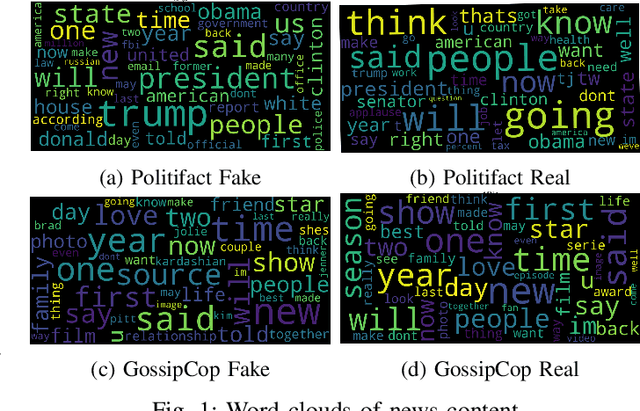
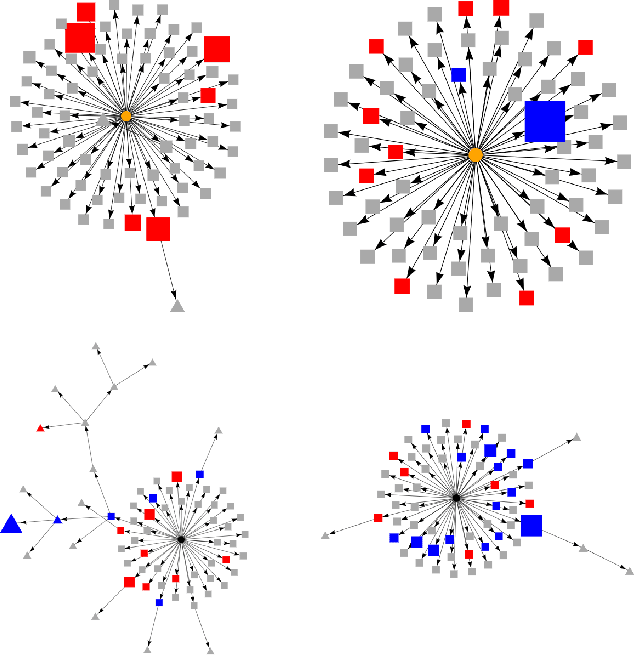
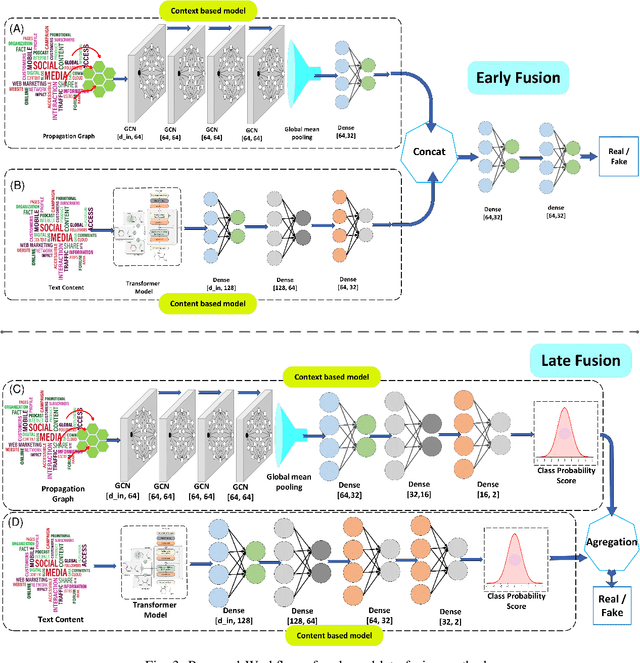

Abstract:Detection of fake news is crucial to ensure the authenticity of information and maintain the news ecosystems reliability. Recently, there has been an increase in fake news content due to the recent proliferation of social media and fake content generation techniques such as Deep Fake. The majority of the existing modalities of fake news detection focus on content based approaches. However, most of these techniques fail to deal with ultra realistic synthesized media produced by generative models. Our recent studies find that the propagation characteristics of authentic and fake news are distinguishable, irrespective of their modalities. In this regard, we have investigated the auxiliary information based on social context to detect fake news. This paper has analyzed the social context of fake news detection with a hybrid graph neural network based approach. This hybrid model is based on integrating a graph neural network on the propagation of news and bi directional encoder representations from the transformers model on news content to learn the text features. Thus this proposed approach learns the content as well as the context features and hence able to outperform the baseline models with an f1 score of 0.91 on PolitiFact and 0.93 on the Gossipcop dataset, respectively
A Review of Deep Learning with Special Emphasis on Architectures, Applications and Recent Trends
May 30, 2019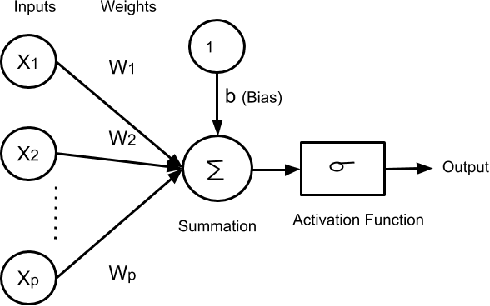
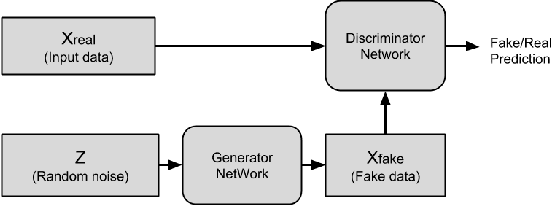
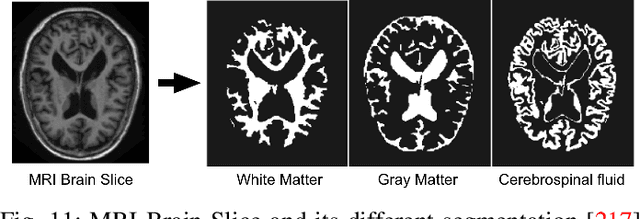
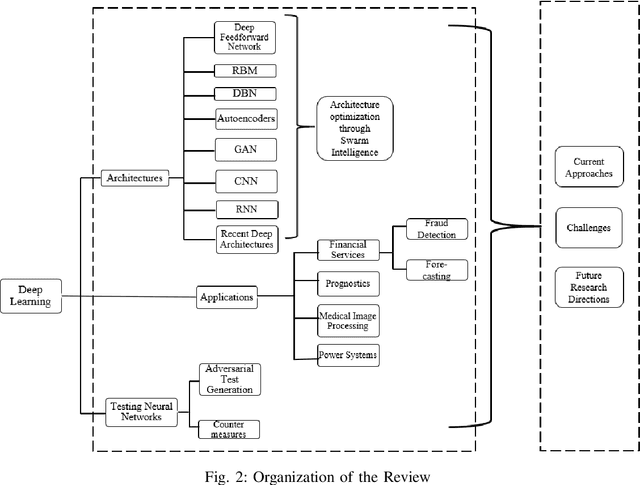
Abstract:Deep learning (DL) has solved a problem that as little as five years ago was thought by many to be intractable - the automatic recognition of patterns in data; and it can do so with accuracy that often surpasses human beings. It has solved problems beyond the realm of traditional, hand-crafted machine learning algorithms and captured the imagination of practitioners trying to make sense out of the flood of data that now inundates our society. As public awareness of the efficacy of DL increases so does the desire to make use of it. But even for highly trained professionals it can be daunting to approach the rapidly increasing body of knowledge produced by experts in the field. Where does one start? How does one determine if a particular model is applicable to their problem? How does one train and deploy such a network? A primer on the subject can be a good place to start. With that in mind, we present an overview of some of the key multilayer ANNs that comprise DL. We also discuss some new automatic architecture optimization protocols that use multi-agent approaches. Further, since guaranteeing system uptime is becoming critical to many computer applications, we include a section on using neural networks for fault detection and subsequent mitigation. This is followed by an exploratory survey of several application areas where DL has emerged as a game-changing technology: anomalous behavior detection in financial applications or in financial time-series forecasting, predictive and prescriptive analytics, medical image processing and analysis and power systems research. The thrust of this review is to outline emerging areas of application-oriented research within the DL community as well as to provide a reference to researchers seeking to use it in their work for what it does best: statistical pattern recognition with unparalleled learning capacity with the ability to scale with information.
 Add to Chrome
Add to Chrome Add to Firefox
Add to Firefox Add to Edge
Add to Edge